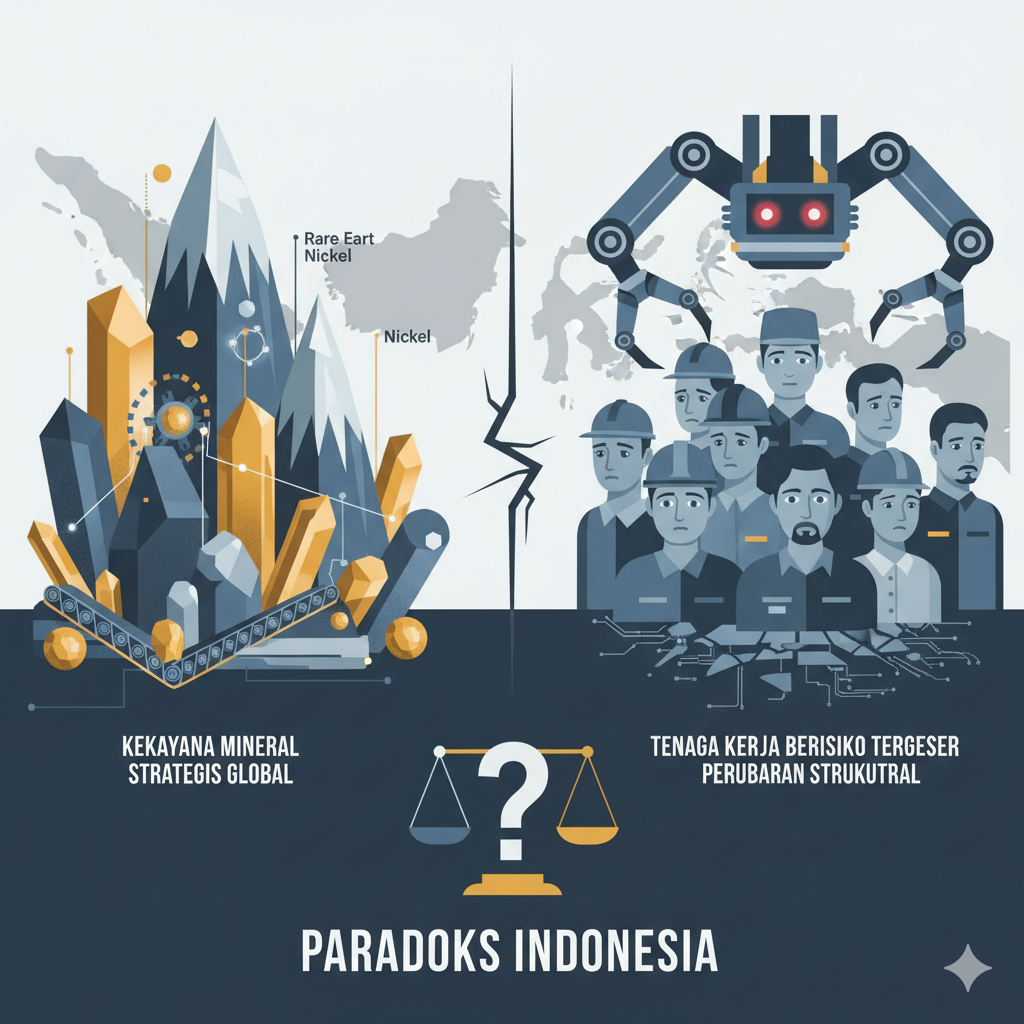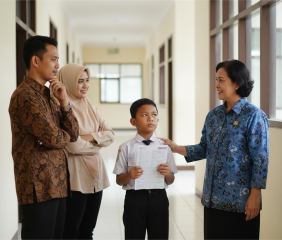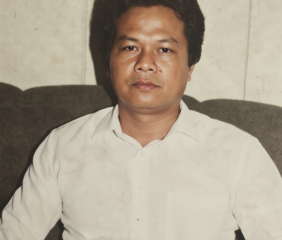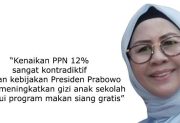
Author : Siska Mariska, kepala bidang pendidikan pengda kepri
Indonesia today sits on a paradox: globally strategic mineral wealth and a workforce that risks being outpaced by rapid structural change. Recent disruptions in large mining operations, volatile commodity markets, and an oversupplied low-value extraction model are exposing how fragile a growth path built mainly on raw commodities can be. If the nation does not treat education and skills development as the immediate, central policy priority, Indonesia risks “stuttering” through transition after transition — reacting to shocks instead of shaping its future.
The disruption is already real
In September 2025, operations at Grasberg — one of the world’s largest copper and gold mines — were halted while authorities conducted rescue and safety operations, illustrating how a single incident can stop output, revenues, and local livelihoods overnight. At the same time, Indonesia’s dominance in certain minerals (particularly nickel) has created both market power and market risk: after surging output in recent years Indonesia accounted for the lion’s share of global nickel production, amplifying global price swings and inventory imbalances. These events are not hypothetical — they are ongoing and material to national income and jobs.
Why mining disruption matters beyond commodity prices?
Mining’s contribution to Indonesia’s GDP and state revenues has been significant historically, and extractive activity is a major source of export earnings and formal employment in several regions. A shock to large producers (whether from accidents, environmental clampdowns, regulatory changes, or global price moves) therefore has ripple effects: regional unemployment, fiscal stress in resource-dependent districts, and sudden demand for new livelihoods. The World Bank’s diagnostic of Indonesia’s mining sector points to these structural risks — including governance, environmental externalities, and value-chain bottlenecks — that make disruption costly and recovery slow.
The missing link: education and skills investment
Yet while minerals drive exports, public investment in human capital lags. Indonesia’s government expenditure on education has been low by international standards in recent years — around roughly 1.2–1.3% of GDP in 2023 according to World Bank aggregates — a fraction of what many comparator countries spend. Low public spending, gaps in vocational and higher-education alignment with industry needs, and regional disparities mean large parts of the workforce are unprepared for alternative employment when mining activity falters or modernizes. In short: resource dependence + weak human capital = vulnerability.
A changing world that demands different skills
Beyond cyclical shocks, the structural transformation of work — automation, electrification, and digitization — affects mining and its downstream industries. International bodies warn that automation, AI, and digital technologies are reshaping jobs across sectors; without active reskilling policies, lower-skilled workers face the highest risk of displacement. For Indonesia, whose comparative advantage has historically been in labor-intensive extraction and some low-skill processing, the message is clear: the next wave of resilience is not in more digging, it’s in smarter and more educated people.
What “stuttering” looks like in practice?
If policymakers and business leaders delay, Indonesia will likely repeat a pattern: boom in production and export receipts, followed by a disruptive event or market downturn, then short-term emergency measures (subsidies, temporary hiring), and finally a slow, uneven recovery that leaves communities poorer and youth without options. That cycle is a “stutter” — progress interrupted by avoidable setbacks. Breaking that cycle requires shifting resources, incentives, and political attention toward education, training, and downstream industrialization.
Practical policy steps (evidence-based and urgent)
1. Raise and reallocate education spending — increase public investment in basic, secondary, and technical education, and ring-fence funds for regions most affected by mining volatility. International comparisons show sustained human-capital investment reduces long-run vulnerability.
2. Scale vocational and retraining programs — co-fund industry-led technical training (e.g., metallurgy, battery manufacturing, renewable energy systems) to convert mineral wealth into higher-value jobs. Tie training targets to licenses and local content rules in mining permits.
3. Accelerate downstream industrial policy — encourage processing and refinement within Indonesia (value addition) so earnings are less dependent on raw commodity prices; quota and permitting adjustments should be paired with incentives for domestic processing facilities.
4. Strengthen social protection and active labor market policies — deploy unemployment support, job search assistance, and mobility grants to smooth transitions when mines pause or close.
5. Integrate digital and future-skills curricula — basic digital literacy, data skills, and problem-solving must be part of national curricula so workers can adapt as industries modernize.
For business and civil society: act now, not later
Companies must invest in local training and transparent community transition plans; universities and polytechnics should rapidly align syllabi with industry roadmaps; and civil society must keep pressure on government to convert resource rents into long-term human capital. The political economy challenge is real — vested interests benefit from status quo extraction — but the social cost of inaction is higher.
From Stutter to Steady Stride
Indonesia’s mineral wealth is an asset, not a destiny. But assets become liabilities when societies fail to invest in people. The mining disruptions we see today are a practical warning: revenue volatility and operational shocks will continue. The way out is straightforward in principle — education, reskilling, downstreaming — but urgent and politically demanding in practice. If Indonesia wakes up quickly and treats education as the central industrial policy tool, the country can convert mining disruption into a managed transformation. If it does not, the economy will keep stuttering — bright resource potential, but dimmed human opportunity.










